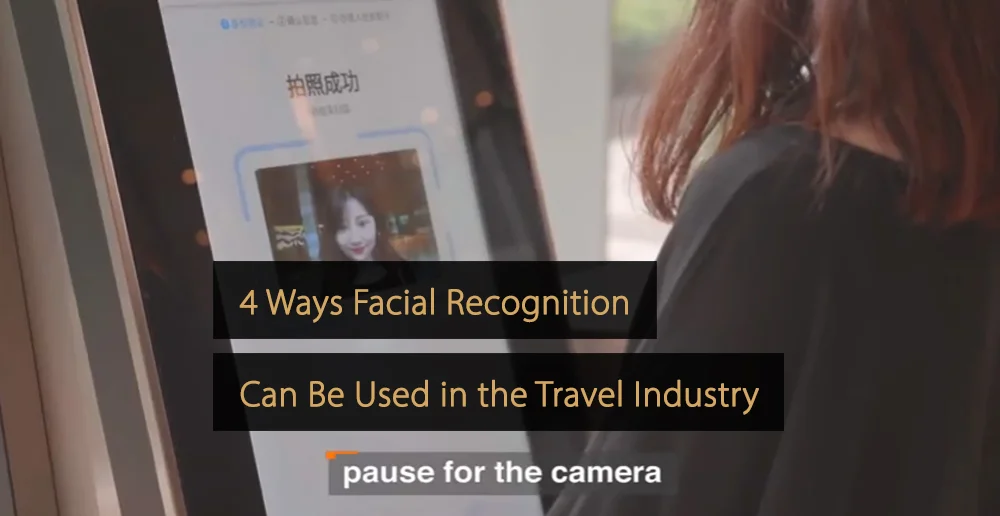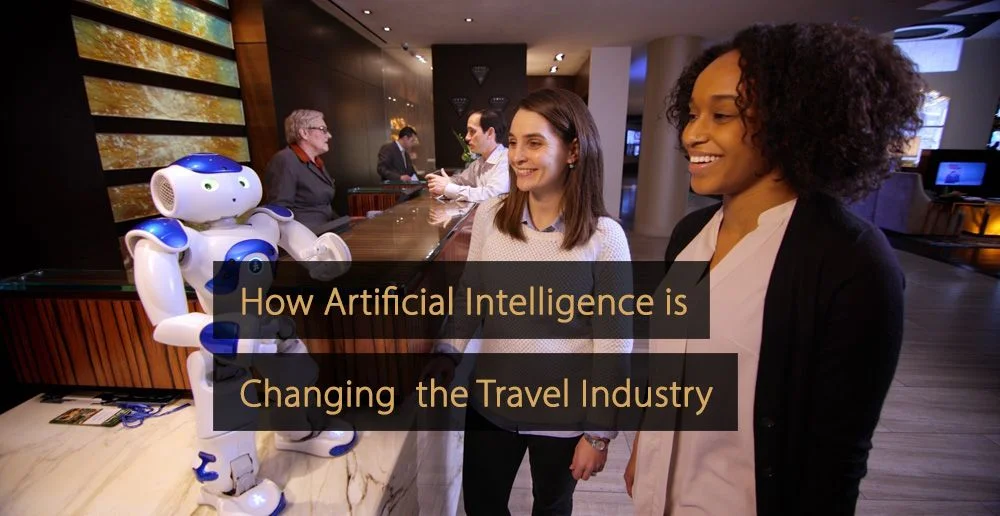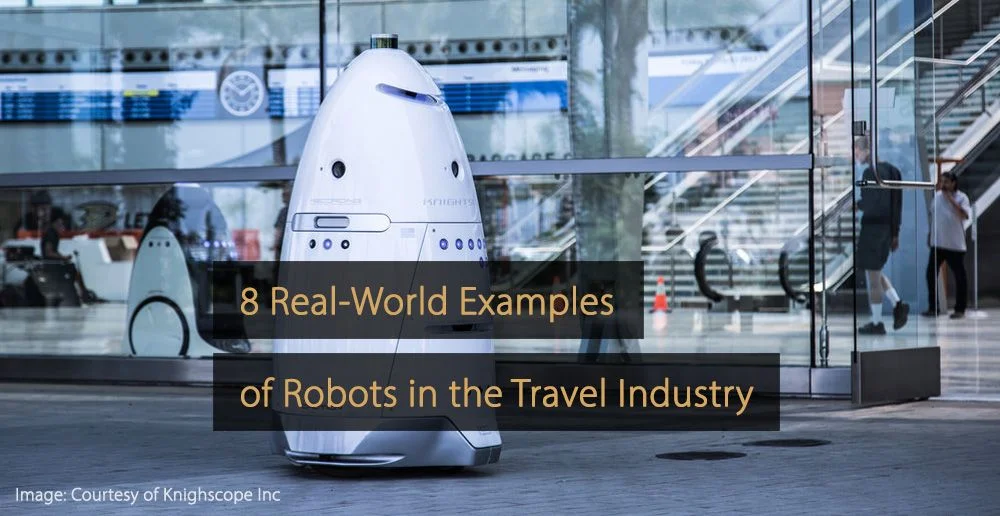Until recently, facial recognition technology was a concept most commonly associated with science fiction. However, the technology has now advanced to the point where it is mainstream, compatible with smartphones, and used by social media sites. The travel industry is another area where facial recognition is being introduced more frequently. In this article, you will find out how it is fundamentally helping to transform tourism.
Table of Contents:
- What Is Facial Recognition?
- Facial Recognition Within the Travel Industry
- 4 Ways Facial Recognition Can Be Used in the Travel Industry
- Examples of Facial Recognition in the Travel Industry
- What Are the Privacy Concerns?
What Is Facial Recognition?
Facial recognition technology is a form of biometric artificial intelligence that can identify an individual or verify their identity based on their face alone. The technology typically works by comparing a digital image or video frame to the faces in a database, matching up facial features and/or skin textures.
According to the Facial Recognition Global Market Report by The Business Research Company, the global facial recognition market size is projected to grow at a CAGR of 16% until 2027. To date, facial recognition has been deployed in a range of fields. Facebook uses facial recognition to identify human faces within digital images, while Apple has a system called Face ID, which authenticates the user’s identity, preventing unauthorized access. The technology is also used within security services and law enforcement.
Facial Recognition Within the Travel Industry
Facial recognition technology is also being explored and utilized more often in the travel industry. It can be especially useful here because tourism companies have to deal with many travelers and customers, so any technology that can help speed up processes is highly beneficial.
In addition, security is a key concern within airports and hotels, and facial recognition can be used to identify people more easily, grant specific people access to places, and keep others out. Moreover, recognizing faces almost instantly can also enhance the customer experience through greater personalization.
4 Ways Facial Recognition Can Be Used in the Travel Industry
Discover the four ways facial recognition technology can be used in the travel industry.
1. Personalization
One of the most obvious ways the travel industry can use facial recognition technology is to improve customer personalization. By matching faces in real-world environments to those on a database, hotels, and other companies can identify people quickly and tailor services to them.
Hotels, for example, can offer guests the option to provide a photograph of themselves during the booking process. When the hotel’s camera identifies their face upon arrival, hotel staff can greet them by name and use the booking information to ensure they get more specific service. The camera can also identify guests who have stayed at the hotel before, allowing them to be rewarded for their repeat custom.
2. Security
Another way facial recognition can benefit the travel industry is through increased security, and there are several potential uses within this area. For instance, facial recognition can verify a guest’s identity and grant them access to a hotel room, gym, or other hotel facility.
Facial recognition can also help prevent crime or identify troublesome guests or visitors. Using an internal database, the technology can quickly and accurately alert hotel staff to the presence of people with a history of bad behavior, allowing them to be more easily removed from the premises or reported to the police.
Table: Examples of Facial Recognition in Travel Technology
3. Data Analysis
For hotels and other businesses in the travel industry, data is crucial in allowing them to deliver excellent service and optimize their processes. Facial recognition technology will likely play a more critical role in this area in the next few years, allowing some data to be collected automatically.
Instead of simply matching faces in an image to faces in a database, the technology can also potentially be used to identify whether someone is male or female, estimate their age, and establish their mood. This can then deliver reliable information about customers’ demographics and how they respond to different locations and services, with businesses using this to pick out important trends.
4. Payments
Finally, one of the most exciting uses for facial recognition is helping authorize payments quickly and seamlessly. MasterCard has already begun experimenting with a ‘selfie pay’ system, where payments can be confirmed using a smartphone camera, with the image being matched to one in a database. According to the Face-swiping Payment Market Report by Grand View Research, the global face-swiping payment market size is projected to grow at a CAGR of 19.9% until 2030.
This technology could be used within hotels to process payments upon check-out, potentially without interacting with a staff member. It may also be deployed in other areas, such as restaurants. Hotels, airlines, and other tourism companies can also use it to identify loyalty scheme members and automatically apply discounts to their final payments, eliminating the need for loyalty cards or discount codes.
Examples of Facial Recognition in the Travel Industry
Below are real-life examples of facial recognition already used within the travel industry.
1# Facial Recognition Check-in in Marriott China
At two Marriott properties in China, guests can arrive, go to a kiosk, and use facial recognition technology to check in quickly and effortlessly without any need to queue or wait for a staff member.
2# Airports Roll Out Facial Recognition Technology
Several airports have already adopted facial recognition technology, allowing tourists to prove their identity and board flights by briefly standing before a camera, removing the need for boarding passes.
3# Facial Recognition for Convenience and Personalisation
NEC’s NeoFace Express technology is being used for greater convenience, personalization, and security in various settings within the tourism industry, and is especially useful in high-traffic environments.
What Are the Privacy Concerns?
While facial recognition technology can greatly benefit the travel and tourism industry, it is important to be aware of the privacy concerns surrounding it. Many people feel the technology—and the collection of biometric data in general—is overly intrusive, and some have concerns about companies collecting and storing so much data about them.
Aside from the basic feeling of companies knowing and collecting too much, there is also significant concern about data being shared with third parties without customers’ express permission. For these reasons, it is important that privacy is taken seriously and, where possible, customers are provided with the ability to opt out.
Facial Recognition in Travel Industry FAQs
Facial recognition technology is being adopted in many different settings and is especially useful in the travel industry for security, personalization, and convenience purposes. However, companies must be aware of privacy concerns and take action to reassure customers worried about how the data will be used.
Did You Like This Article About Facial Recognition in Travel?
You might also be interested in the following articles:
- How Augmented Reality is Revolutionising the Travel Industry
- How Artificial Intelligence is Changing the Travel Industry
- How Virtual Reality is Transforming the Travel Industry
- Robots in the Travel Industry: Real-World Examples
- How Blockchain Technology is Transforming the Travel Industry
- How the Internet of Things (IoT) can Benefit the Travel Industry
- How Can Voice Control Benefit the Travel Industry?
More Tips to Grow Your Business
Revfine.com is the leading knowledge platform for the hospitality and travel industry. Professionals use our insights, strategies, and actionable tips to get inspired, optimize revenue, innovate processes, and improve customer experience.Explore expert advice on management, marketing, revenue management, operations, software, and technology in our dedicated Hotel, Hospitality, and Travel & Tourism categories.
This article is written by:
Hi, I am Martijn Barten, founder of Revfine.com. With 20 years of experience in the hospitality industry, I specialize in optimizing revenue by combining revenue management with marketing strategies. I have successfully developed, implemented, and managed revenue management and marketing strategies for individual properties and multi-property portfolios.










Leave A Comment